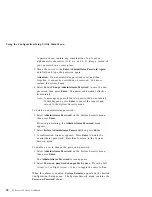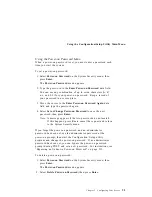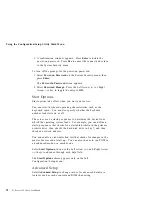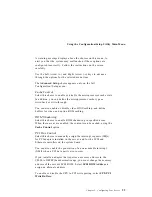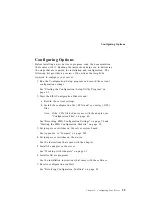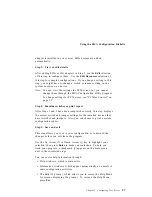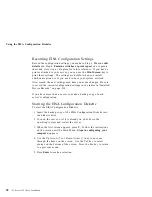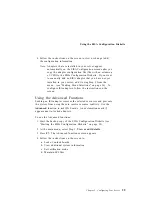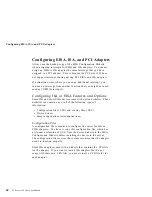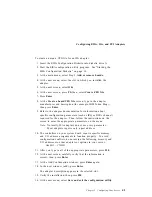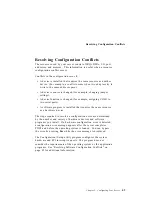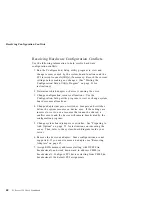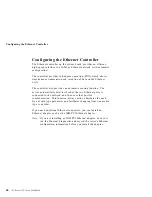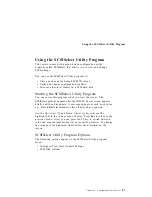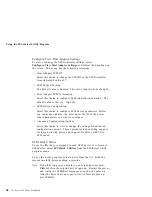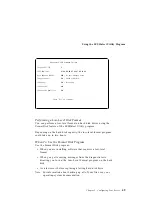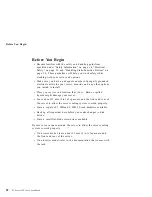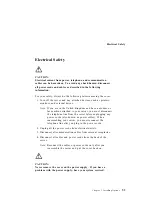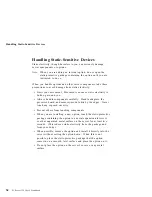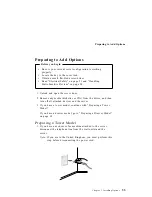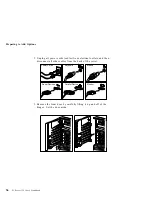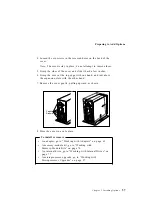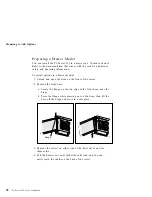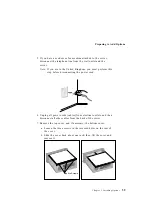
Resolving Configuration Conflicts
Resolving Hardware Configuration Conflicts
Use the following information to help resolve hardware
configuration conflicts:
1. Run the Configuration/Setup utility program to view and
change resources used by the system board functions and the
PCI interrupt requests (IRQs), if necessary. Record the current
settings before making any changes. (See “Starting the
Configuration/Setup Utility Program” on page 21 for
instructions.)
2. Determine which adapter or device is causing the error.
3. Change configuration resource allocations. Use the
Configuration/Setup utility program to view or change system
board resource allocations.
4. Change adapter jumpers or switches. Jumpers and switches
define the system resources a device uses. If the settings are
incorrect or set to use a resource that cannot be shared, a
conflict occurs and the device will remain deactivated by the
configuration program.
5. Change system board jumpers or switches. See “Preparing to
Add Options” on page 55 for instructions on removing the
cover. Then, refer to the system-board diagram inside your
server.
6. Remove the device or adapter. Some configurations are not
supported. If you must remove an adapter, see “Removing
Adapters” on page 67.
7. Assign EISA memory addresses starting with DFFFF (in
hexadecimal), and work downward to address C8000 (in
hexadecimal). Configure PCI devices starting from C8000 (in
hexadecimal), the default PCI assignments.
44
PC Server 325 User's Handbook
Summary of Contents for PC Server 325
Page 1: ...PC Server 325 User s Handbook IBM...
Page 6: ...vi PC Server 325 User s Handbook...
Page 10: ...Laser Compliance Statement x PC Server 325 User s Handbook...
Page 136: ...Updating the Server Configuration 122 PC Server 325 User s Handbook...
Page 212: ...Resolving Configuration Conflicts 198 PC Server 325 User s Handbook...
Page 238: ...Installed Device Records 224 PC Server 325 User s Handbook...
Page 287: ......
Page 288: ...IBM Part Number 76H8831 Printed in U S A September 1996 76H8831...

